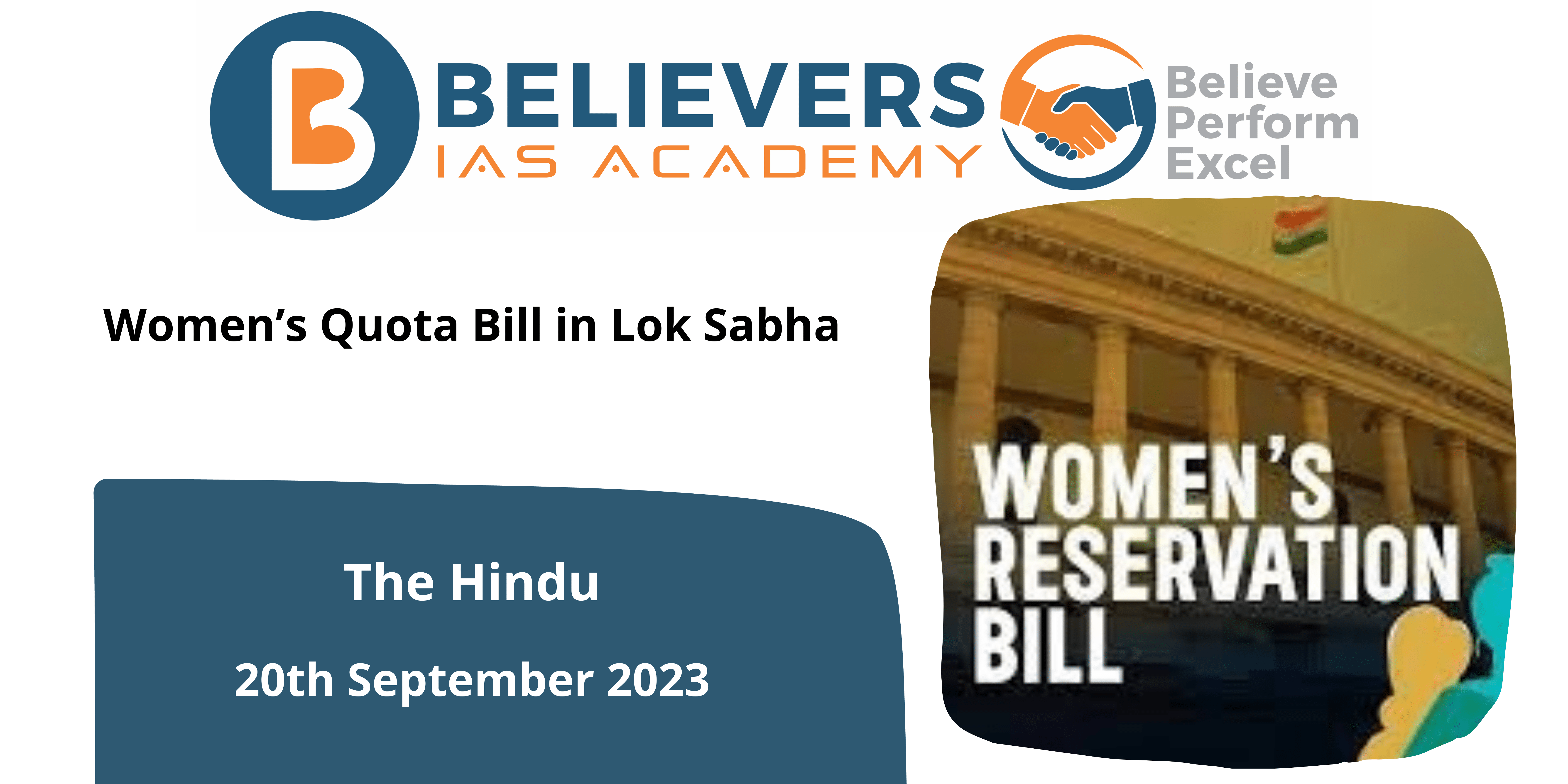Women’s Reservation Bill
Context
With enough evidence of female leaders making a difference around the world, India should not underestimate the critical role women may play in nation-building and development and should consider implementing legislation that has the potential to improve the lives of many women and children.
Points to Ponder
- Women confront severe impediments to political engagement in India, with women holding only 14% of parliamentary seats.

- While women played an important role in India’s fight for independence, progress has been slow since then, and the patriarchal backlash has left women’s status far from ideal.
- Women’s reservations in politics extend back to the pre-independence era, with requests in the 1950s for 10% of seats to be reserved for women. In the 1980s, momentum for this cause grew, and in 1988, the National Perspective Plan for Women recommended reserving 30% of seats in all elected bodies for women.
- In 1993, the Panchayati Raj Act was revised to reserve 33% of seats in local government bodies for women, and in 1996, the Women’s Reservation Bill was submitted in the Lok Sabha, proposing to reserve one-third of seats in the Lok Sabha and State Legislative Assemblies for women. The Bill regained traction in the early 2000s and was passed by the Rajya Sabha in 2010.
- Women leaders have outperformed their male counterparts over the world, and nations such as Scandinavia and Rwanda have established legislation to promote gender equality and women’s empowerment.
- Norway introduced a quota system in 2003, requiring women to hold 40% of corporate board seats.
- The Women’s Reservation Bill must now be passed in India to provide more political participation for women, who have waited far too long for the opportunity to lead. Nobody doubts women’s leadership abilities, and the lack of political representation reflects a terrible injustice.
Background:
- Women’s political representation in India can be traced back to the Indian national struggle. In 1931, three women’s organisations published an official memorandum on the place of women in the new Constitution, paving the way for the historic adoption of the 73rd and 74th amendments.
- Women’s Reservation Bill: The Women’s Reservation Bill recommends that 33% of Lok Sabha and State Legislative Assemblies seats be reserved for women. Reserved seats in a state or union territory may be assigned to various districts through rotation. Seat reservations for women will be phased out 15 years following the passage of this Amendment Act.
- According to the Global Gender Gap Report 2022, India ranks 48th out of 146 countries in the Political Empowerment (Percentage of Women in Parliament and Ministerial Positions) component. The right of women to self-representation and self-determination is critical for the development and well-being of society in villages and beyond. More women in positions of power are needed to solve challenges such as violence against women, low female labour-force participation, poor nutrition, and a skewed gender ratio.
- Women’s representation in Parliament and State Legislative Assemblies remains low, with only 14.4% of Indian Parliament members being women. Women have a lesser representation in the lower House than in neighbouring countries such as Nepal, Pakistan, Sri Lanka, and Bangladesh.
- In general, increasing women’s political presence in India is critical for achieving gender equality and tackling issues that disproportionately affect women. Despite progress, more needs to be done to ensure that women have an equal voice in decision-making processes.





